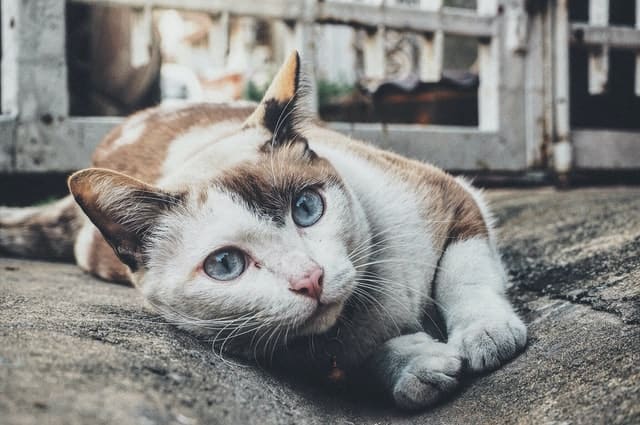Everything you need to know about the “different twin” of the Siamese cat

Very similar to the Siamese, with which it shares the genetic makeup, the Thai cat would seem to be the oldest in history. Characterized by a muscular body and “lemon” eyes, it is the typical indoor cat.
The Thai cat , as the name implies, is originally from Thailand, and is one of the oldest breeds ever known. In fact, it appears to have been imported to Europe in 1870.
The first examples had nothing to do with the classic Siamese known today. In fact, the Thai cat had a more robust, ungainly, less ‘extreme’ body.
The love for the breed led many breeders to a wild selection which caused, around the 1950s, the almost total disappearance of the authentic Siamese cat .
The Thai breed was officially recognized only in 1990.
Thai cat appearance
This cat, forerunner of the ‘modern’ Siamese, is robust, muscular but not stocky. The legs are rounded and the tail, tapered, and has a pointed end.
The head has a triangular shape but with rounded contours. As well as the muzzle, characterized by a strong jaw.
The eyes are elongated but large, like the ears: of medium size, pointed and set well apart. The coat, short and silky, has no undercoat.
The profile appears slightly concave near the curve of the eyes, which can only be a beautiful bright blue.
The coat, shiny, is characterized by a wide variety of colourpoints ranging from seal , the most traditional, that is tan, which combines the cream of the rest of the body to the dark brown of the mask, ears, legs, tail and testicles, to chocolate. . Tabby and tortie (tortoiseshell) variants are also allowed, as long as white is not present.
There are many defects of the traditional breed, among which we cite strabismus, polydactyly, severed tail and jaw problems . It is also not uncommon to find cats with lighter markings, stripes or hair on their coat.
Thai cat character
This cat loves apartment life, in fact it ties a lot with adults and children. It is sweet, faithful, affectionate, but it does not disdain games and walks on a leash or in the car without a pet carrier.
this cat easily learns small instructions, in fact he loves playing with the ball and grabbing small objects. It is intelligent and outgoing, expresses its affection by placing itself on the lap, around the neck or on the shoulders.
Thai cat care
The coat needs to be trimmed 1-2 times a week with a soft bristle brush. The fine-toothed metal comb can help clean the hair . To keep it shiny, you can use a chamois or velvet.
Feeding the Thai cat
As for food, that cat eats everything from vegetables to eggs, but it is particularly fond of fish such as tuna and salmon. It can indifferently take packaged and homemade food: if you choose the always practical croquettes, the important thing is that they are quality products.
For puppies, if you opt for a homemade diet with wet products, foods such as minced meat, rice and vegetables should be preferred, supplemented with vitamin products.
How much?
In USA, it is possible to find traditional Thai cat breeding. Costs are around $800 to $1100 USD.






